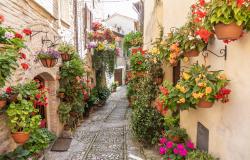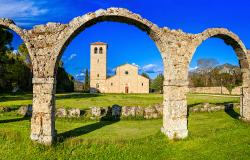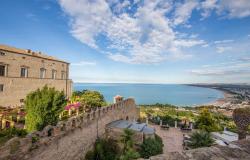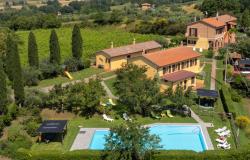The man who captured an Era
Without Giorgio Vasari’s life work we would not have the insight into the art scene of the Renaissance that we have today. In fact, it is accepted that it was Vasari who first used the term ‘Renaissance’ and also the reference to ‘Gothic’. It can be said that he was the first art historian, writing the biographies of hundreds of known artists, gathering information on their lives and their works in his volumes of:
‘Le Vite de’ più eccellenti pittori, scultori e architettori.
‘The Lives of the most excellent Painters, Sculptors and Architects’.
The work is often referred to as ‘Le Vite’ or ‘The Lives’. It begins with the evolution of Italian art from Giotto and continues through to Michelangelo Buonarroti.
Not only is this work about the lives of artists but also the techniques and styles used. Here is a wonderful except from ‘Le Vite’ when John of Bruges has ruined his work while drying it in the sun and determined to find a new mix for varnish.
’He made many experiments and at last found that the oil of linseed and the oil of nuts were the best for drying of all that he tried. Having boiled them with his other mixtures, he made the varnish that he, or rather all the painters of the world, had been so long desiring’.
It is widely accepted that with the exuberant embellishments in the work, some of the facts are questionable and there was a definite bias towards the Florentines, however that does not deter from the fact that the work itself is a unique window through which we can gaze on the era in which it was written, including all the ‘gossip’ that Vasari tells us... It was published first in 1550 and dedicated to the Grand Duke Cosimo I de’ Medici. Later in 1598 woodcut portraits of the artists were added and it was enlarged and republished.
 [Vasari [Public domain]
[Vasari [Public domain]
Vasari was more that his writings. He was an artist himself and his own biography is also recorded in ‘Le Vite’. Not only an artist, but also an architect, he designed the loggia of the Palazzo degli Uffizi, and the Vasari Corridor, running alongside the river Arno and crossing the Ponte Vecchio, is a famous part of his legacy. The passage starts at the Palazzo Vecchio, joining with the Uffizi, and connecting with the Palazzo Pitti.

Early years
At a very young age Giorgio was sent to be a pupil in the studio of Guglielmo de Marcillat, skilled stained glass master. He was then sent to Florence according to ‘Le Vite’ (in a translation by E.L. Seeley), quote:
‘At this time in the year 1525 Giorgio Vasari was brought as a boy to Florence by the Cardinal of Cortona and put with Michel Angelo to learn the art. But he, being called by Pope Clement VII to Rome, determined that Vasari should go to Andrea del Sarto, and went himself to Andrea’s workshop to recommend him to his care.’
Rosso Fiorentino and Jacopo Pontormo were also students at Andrea del Sarto’s circle. Giorgio Vasari had a lifelong admiration of Michelangelo Buonarroti and befriended him. In 1529 he joined the Medici entourage in Rome and studied all forms of Roman antiquity, and the works of Raphael in the Vatican. He painted in the Tuscan Mannerist style and by age twenty six he was very much in the employ of the Medici family and was financially successful. He made himself a part of the fabric of all the artistic and high society circles, enabling him to listen in, observe and collect information for his writings.
In 1542 Vasari began restoration of his house in Arezzo, he only completed the decoration of the walls and the vaults much later. It is known now as ’Museo Casa Vasari’ and he. It was grand, and had three floors and a roof garden. He was held in high regard in the town and was extremely wealthy. He was married to Niccolosa Bacci who came herself from a wealthy and noted family, which added to his social standing in the community. One of his honours was ‘Knight of the Golden Spur’ bestowed on him by the Pope.

In 1547 he was commissioned by Cardinal Alessandro Farnese to paint a fresco depicting the life of Pope Paul III in the Cancelleria in Rome ‘Sala dei Cento Giorni’. The over exaggerated gestures of the figures in the fresco are typical of the Mannerist style. It was completed in a short time, a hundred days, which was said by some to have compromised the quality of the work.
Palazzo Vecchio
At the Palazzo Vecchio the ‘Salone dei Cinquecento’ or ’Hall of the five hundred’originally built for the Grand Council in 1494, of which there were 500 members, a large fresco painted by Vasari, which he worked on between 1555 and 1572 with his assistants, engages those who enter as a centrepiece. On the walls it consists of divided panels depicting six historical battles and events of Florence. This is said to be one of Vasari’s best painted works. The ceiling of the ‘Sala dei Cinquecento’ has 39 panels representing the life of Cosimo I, as a glorification of the Grand Duke. Also at the Palazzo Vecchio is the ‘Studiolo of Francesco’, which was designed by Vasari, as was the staircase to the second floor. On the death of Giovanni Battista del Tasso, Vasari and his helpers took over the commission for the designs for the ‘Apartments of the Elements’.

Other works
In the ‘Sala Regia’ Rome, the State Hall in the Apostolic Palace in the Vatican city he painted huge frescoes, ’Gregorio XI torna da Avignone’and ‘Battaglia di Lepanto. In 1562 he completed a fine example of High Renaissance architecture, namely the octagonal dome on the’Basilica of Our Lady of Humility’in Pistoia, after Giuliano da Sangallo had left Tuscany and Cosimo I de ’Medici handed it for completion to Vasari.
In 1563 he helped to found the ‘Accademia e compagnia delle arti del Disegno’, with the grand duke and Michelangelo at the head.
He renovated the Santa Maria Novella, removing the rood screen and loft and adding six chapels between the columns, and in the Basilica di Santa Croce he also rebuilt the interior. Some damage occurred and Vasari plastered over Giotto’s frescoes! A painting of Vasari’s the ‘Adoration of the Magi’ is in the church and he designed and built Michelangelo’s tomb there.

In 1572 Vasari undertook the painting of the massive Duomo of the cathedral in Florence depicting ‘The Last Judgement’. Vasari died in 1574 before it was completed and Federico Zuccaro took over its completion.
He also designed the bell tower for the church ‘Cavalieri di Santo Stefano’ in Pisa, and painted the ‘Entombment di Santo Stefano’ in the church.

Vasari’s long friendship with Michelangelo culminated with the death of his friend. It took some time before Michelangelo’s body finally arrived at Santa Croce, where Vasari had built his tomb. He had died in February 1564, and was only laid in the tomb in July 1564 apparently his body was moved in the night by torchlight by the artists from the Academy. Above the tomb are three sculptures in sad poses; representing painting, sculpture and architecture. A fitting resting place for Vasari’s long time friend.
Giorgio Vasari legacy
Vasari died in 1574 in his house in Florence. He was sixty three. He was buried in the church of Santa Maria in Arezzo in a chapel he designed for himself. He left us numerous treasures.
Casa Vasari, his house in Florence that was donated to him by Grand Duke Cosimo I de’ Medici in 1561. The rooms are frescoed in the typical Mannerist style with stories from Pliny’s writings and portraits of artists. Alongside this are collections of paintings from his contemporaries.
Museo Casa Vasari, in Arezzo, which he had bought in 1511 and restored and decorated it circa 1542 and 1548. He did not spend much time there however, as his commissions kept him in Rome and Florence. The house is rich with frescoes and paintings which are a testament to Mannerist painting.
‘Le Vite’, Giorgio Vasari left us paintings, frescoes and architecture. Yet his writings in ‘Le Vite’ are probably considered his greatest legacy. The volumes allow us to enter the world of the Renaissance both in art terms - detailed descriptions, dates, and patrons, and also to view the lifestyles and personalities of artists and the methods and techniques used at the time. He also had his own views on artistic talent quote:
‘Men of genius sometimes accomplish most when they work the least, for they are thinking out inventions and forming in their minds the perfect idea that they subsequently express with their hands’ Giorgio Vasari.
Italy’s Treasures are richer because of the diligence and talents of Giorgio Vasari.

















